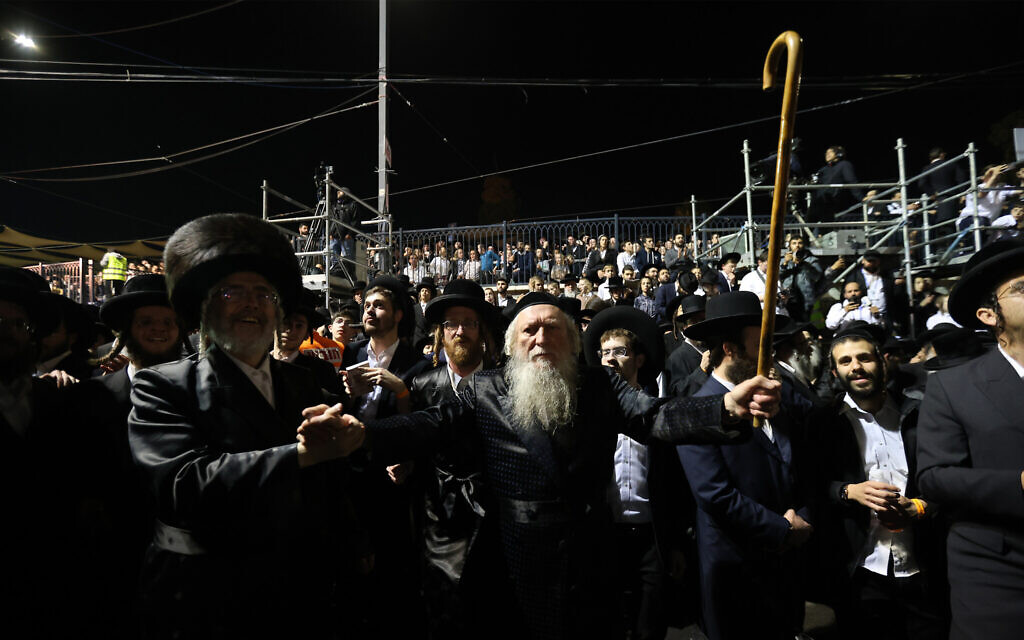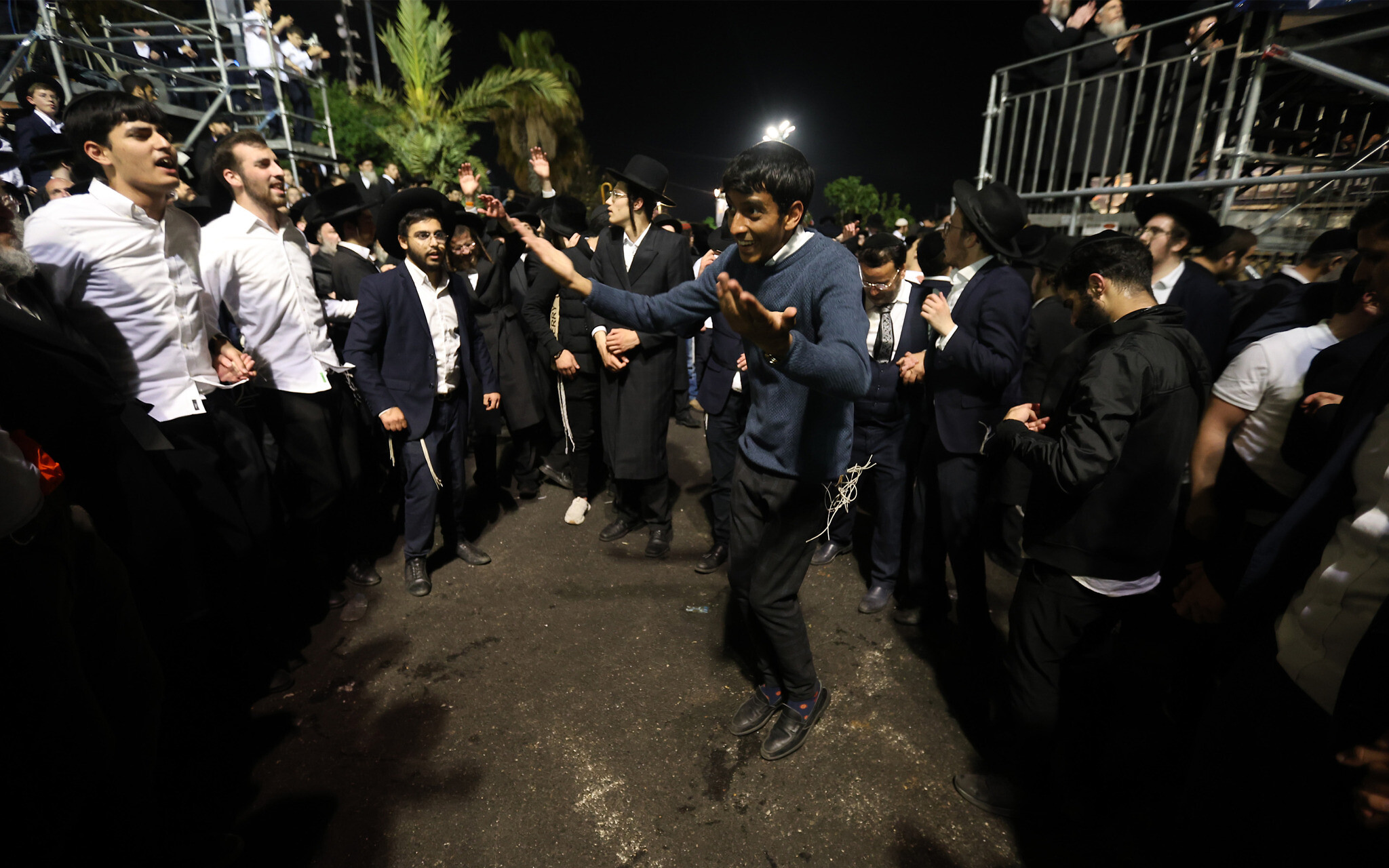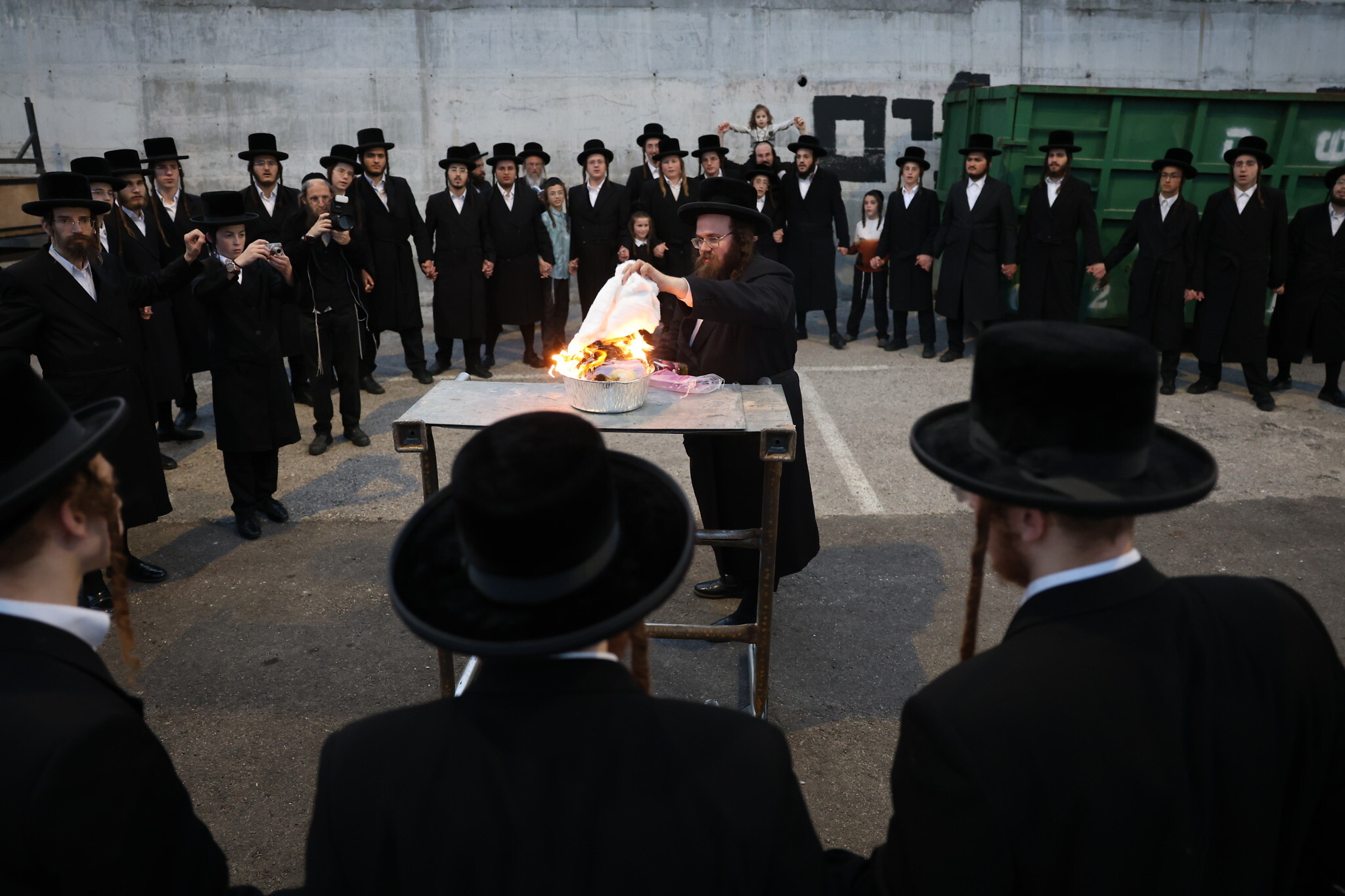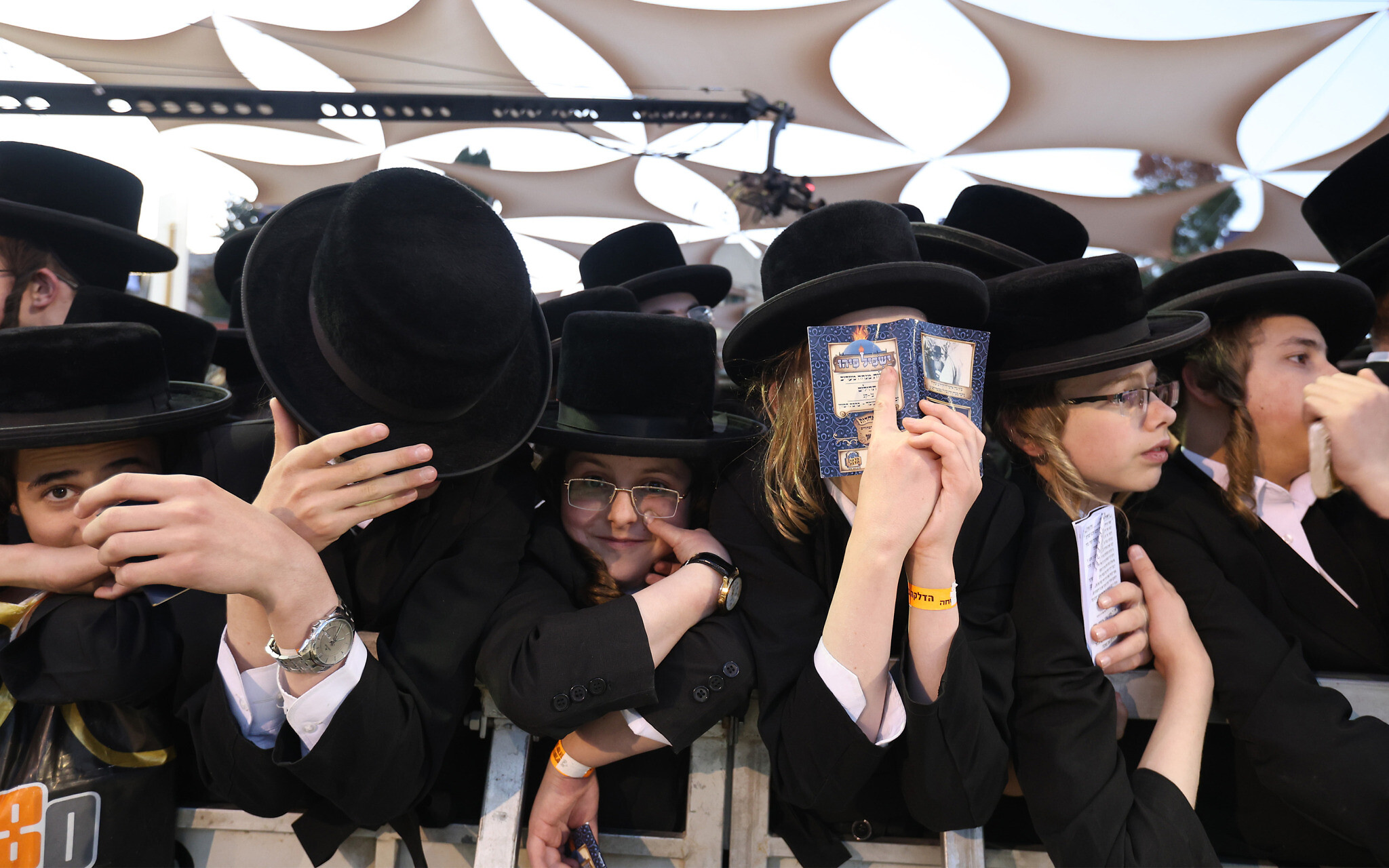At Meron pilgrimage, joy and grief mix as Haredi traditions and secular Israel clash
At renewed annual Lag B’Omer event, worshipers mourn the 45 attendees killed in deadly 2021 crush, while chafing at regulations meant to head off another disaster
More than merely a technical crowd management issue, the security arrangements around Meron are a point of friction between strictly devout Haredi Jews, who live in insular communities led by rabbis, and the enforcement and regulation mechanisms of the more secular State of Israel. The state’s actions, policies and principles often clash with those of the ultra-Orthodox world.
“They don’t want us to come here, that’s the truth,” Kazin said after he entered the site. “So they divide us, send some of us here and some of us there. Because to them, we’re nothing but a nuisance,” he said of authorities.
“They want me to go downhill. I didn’t come from Bnei Brak to be on some hill. I came to be near Rabbi Shimon Bar Yochai,” Kazin said.
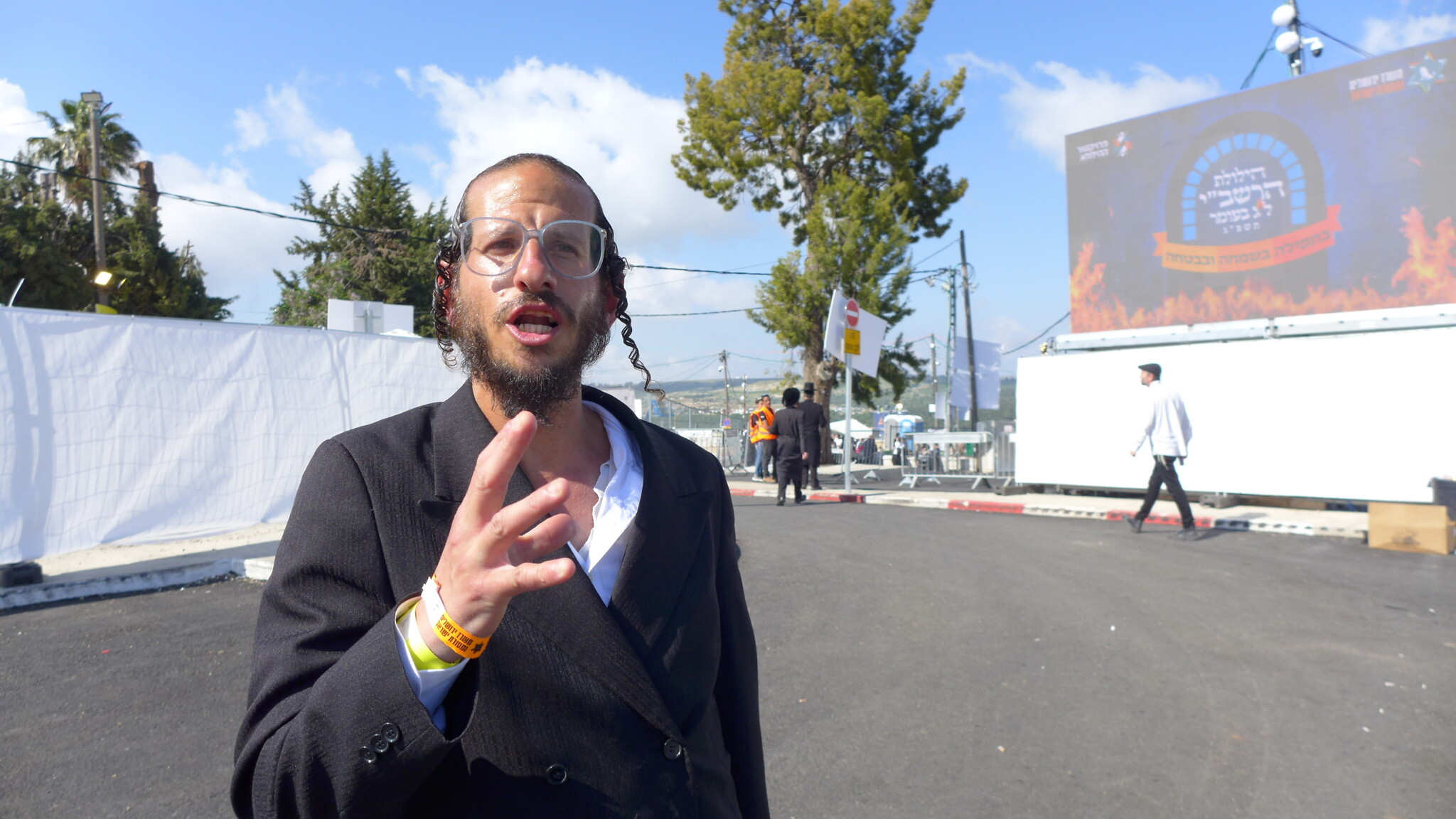
Following the 2021 catastrophe, several government ministries and branches overhauled how the pilgrimage is managed. Rabbis kept the 2022 event low scale amid preparations for adaptations that would allow a resumption of mass events.
Around 200,000 Haredi Jews were expected to attend this year’s pilgrimage to Meron on Monday night.
To prepare for the large numbers, authorities beefed up the deployment of police officers — there were 8,000 of them at the main Meron pilgrimage site on Monday — and rescue professionals. Thousands of stewards from the Haredi public were recruited to minimize friction and streamline interaction with the pilgrims, some of whom speak better Yiddish than Hebrew.
Another change was the introduction of stricter enforcement of safety capacities at the gravesite, which is situated atop a steep summit with a limited surface area and featuring topographic complications, and encouraging the unadmitted to celebrate instead at an open area farther downhill.
Some pilgrims, like Moshe Levy from Shiloh, near Jerusalem, accepted the new reality.
He came to the gravesite hours ahead of the main event, lighting a fire as is customary on Lag B’Omer, to avoid the evening rush and do his part in reducing the crowd numbers.
“I don’t need the shoving and pushing. The magic happens at the gravesite and that’s good enough for me,” Levy told The Times of Israel.
But others circumvented the new arrangements.
“He brought me in,” Asher Levy, who is not related to Moshe, said while pointing to the heavens when asked how he made it into the grave compound without a wristband. Pressed for more information, he said: “Oh, I just came down the mountain from a moshav.”
Others, like Kazin, complied with authorities’ requirements but did so under protest. He “pulled some strings” in Bnei Brak to get an orange wristband, Kazin said with some pride.
“But how come I need an orange wristband? This place is like my home. And now a police officer comes here and tells me: ‘Go here, go there?!’ It’s because we’re Haredim so the authorities feel they can walk all over us,” Kazin said.

He also complained about the actions of “certain rabbis and people of influence within our circles, who help the snakes control us.” Asked whom he meant by snakes, he only said: “I don’t mean to offend. We’re all Jews.” Visibly upset, he added: “It’s all about control. Like they did when they made us wear masks.”
During COVID-19, many ultra-Orthodox ignored emergency regulations based on medical authorities’ policies that mandated wearing face masks in public, prompting outrage by many non-Haredim who accused the community of helping the pandemic spread.
Reflecting deep divisions around pragmatism and fatalism, the health and safety crises set the scene for an ideological clash over the right-wing policies of the government of Prime Minister Benjamin Netanyahu, which is dependent on the cooperation of the country’s two Haredi parties.
Other pilgrims, who did not make it into the gravesite compound, reacted violently to security arrangements, hurling objects at police, according to Haaretz. At one checkpoint, young men pushed past police, according to reports on social media.
One worshiper allegedly bit Israel Diskind, whose brother, 23-year-old Simcha Bunim, died in the 2021 catastrophe. Diskind, a spokesperson for Heritage Minister Amichai Eliyahu, was reportedly suspected by some radicals of being an undercover police officer. The radicals confronted Diskind, leading to an altercation. Police detained the man who allegedly bit him but released the perpetrator to avoid further confrontations, the Kan broadcaster reported.
Some journalists were cursed at and some police cameras vandalized. Police said they believe some sites on Meron were exceeding their safety capacity.
Despite these issues, “generally it has been a peaceful event so far,” said Dov Maisel, deputy head of operations for United Hatzalah, a Haredi rescue and first response group that is accredited, along with Magen David Adom, at the event as responsible for medical issues.
United Hatzalah was working to encourage people not to stay at the gravesite and leave after half an hour to make room for others, Maisel said.
Like the attitudes to the security arrangements around it, the holiday itself also reflects the split reality that Haredim and non-Haredim sometimes inhabit in Israel.
For many secular and national religious Israelis, Lag B’Omer is a minor holiday enjoyed mainly by children, who have bonfires on its eve, although that custom, too, is declining as authorities increasingly crack down on it due to safety and environmental concerns.
But for the Haredim, it is a major date that the Talmud ties to a plague that killed thousands of students of Rabbi Akiva, among the greatest early rabbinic figures, who legend has it was put to death by the Romans for defying their restrictions on teaching Torah. According to Jewish tradition, the plague ceased on Lag B’Omer, making that date a time of celebration.
Lag B’Omer is also believed to be the date of death of Bar Yochai, a prominent disciple of Rabbi Akiva and a major figure in Jewish mysticism, or Kabbalah, whose gravesite on Mount Meron is the locus of festivities year-round. Bar Yochai’s grave became a site for celebration because tradition has it that he asked his disciples to rejoice instead of mourn when they commemorate his death.
Celebrating Lag B’Omer is “refilling the fountains of the soul,” Moshe Levy, the pilgrim from Shiloh, said.
At the main ceremony near the gravesite, 4,000 men gathered on Monday night around a tall metal cylinder full of wood and oil-doused textiles where the ceremonial fire was to be lit. The excitement was palpable as a cantor recited Mincha, the afternoon prayer many Jews say each day in the afternoon. The prayer was followed by a choir that sang Psalms, their strong tenors reverberating in the cool mountain air as their listeners swayed with delight.
A cantor then recited the names of the 45 victims of the 2021 crush, as the crowd listened respectfully. Nachum Dov Brayer, who heads the Boyan Hasidic dynasty, lit 45 candles in memory of the victims and the cantor then recited the Kaddish mourning prayer.
After some additional prayers, the fire was lit and the men’s section, bordering a packed women’s section, exploded into dancing to the sounds of a live band and choir, including row dancing and the signature synchronized bobbing jumps of Haredi groups.
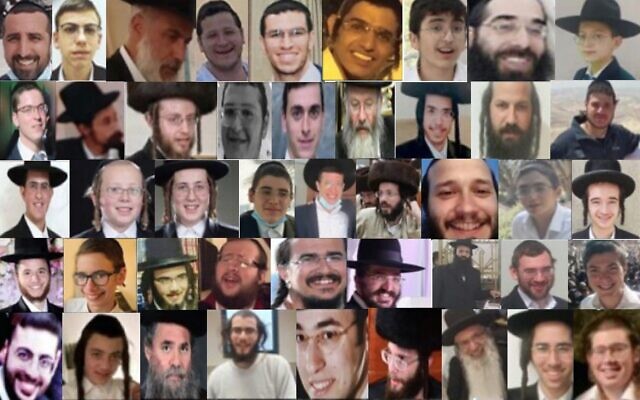
Kazin was deeply moved by the gesture to the victims, he said.
But he disputed that the arrangements that irked him were effective attempts to prevent a repeat.
“We want police to help us. Not oppress. It can be done,” Kazin said. “But to shepherd us you have to know us. And the police don’t know us.”

